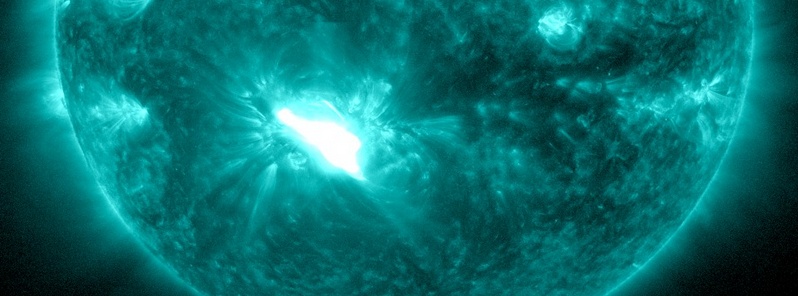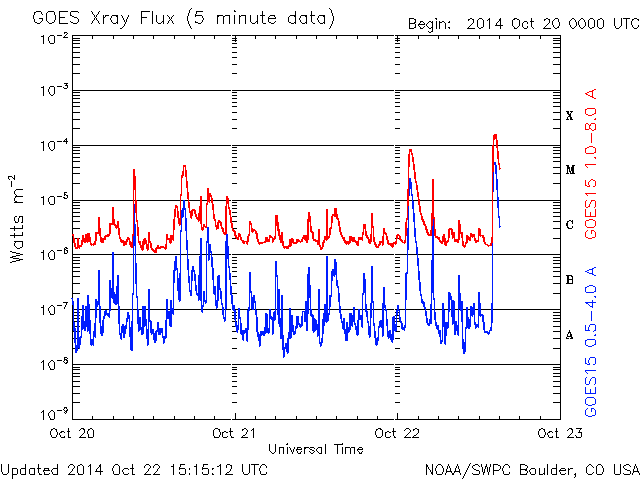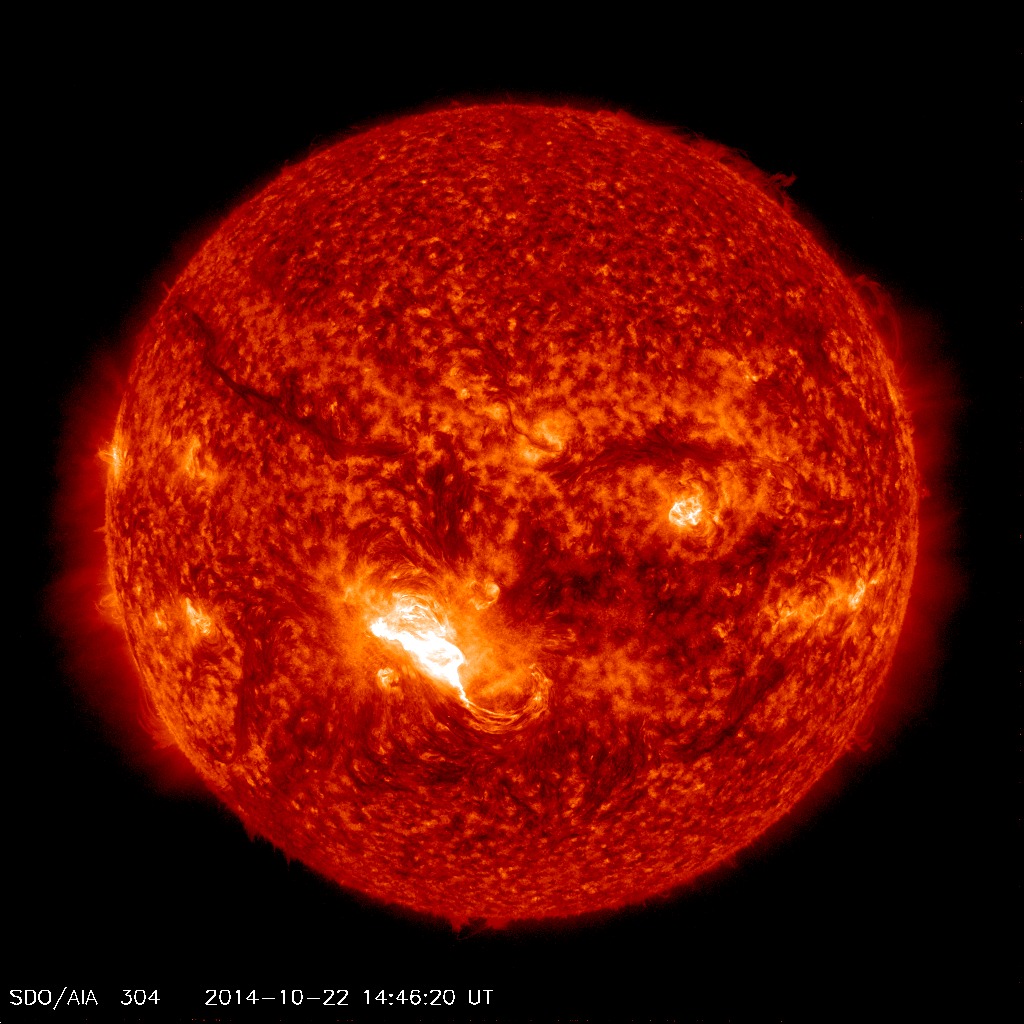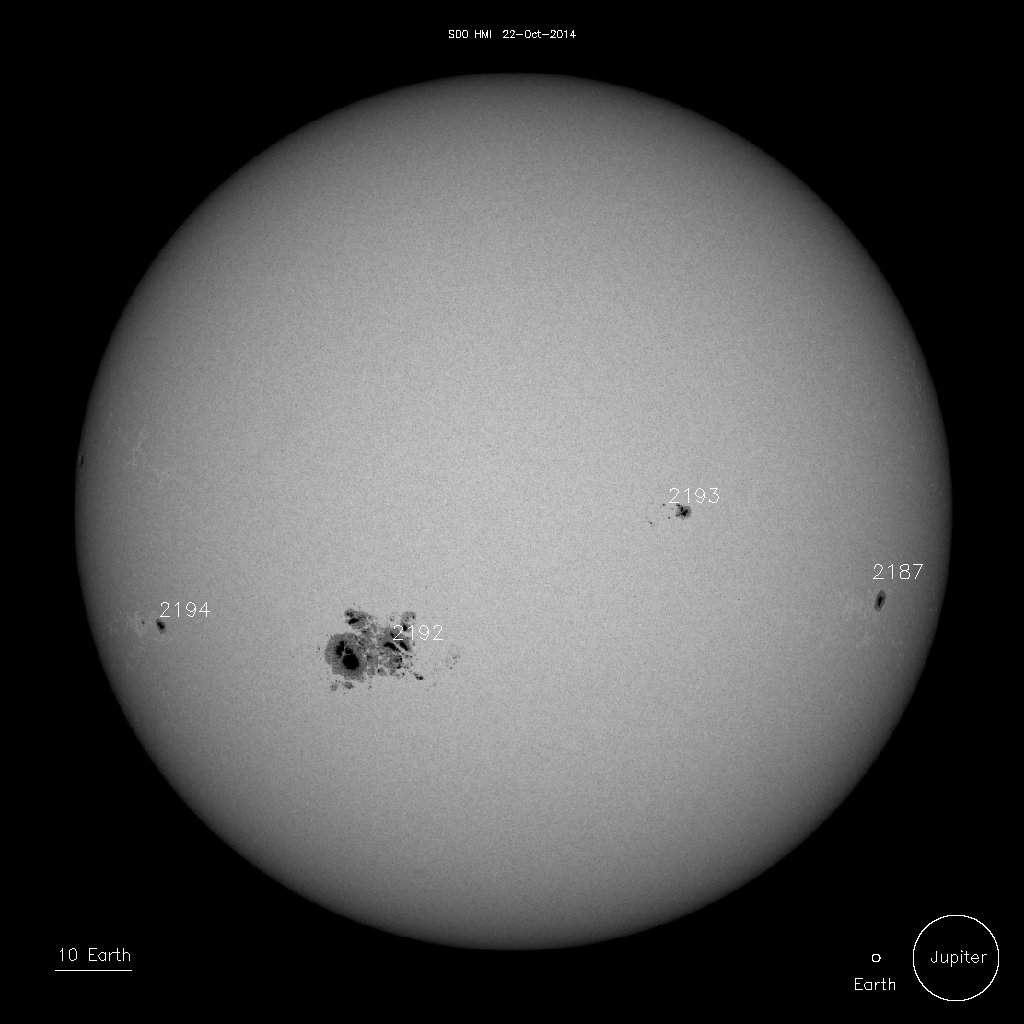Major X1.6 solar flare erupted from Region 2192

A major solar flare measuring X1.6 at its peak time erupted from Region 2192 on October 22, 2014. The event started at 14:02, peaked at 14:28 and ended at 14:50 UTC.
R3 – Strong radio blackout produced significant HF signal fading on the sunlit side of Earth. There are about 175 such events during each solar cycle, according to NOAA.
A 10cm Radio Burst (4 min/200 sfu) was associated with the event. 10cm radio burst indicates that the electromagnetic burst associated with a solar flare at the 10cm wavelength was double or greater than the initial 10cm radio background. This can be indicative of significant radio noise in association with a solar flare. This noise is generally short-lived but can cause interference for sensitive receivers including radar, GPS, and satellite communications.
Analysis of SDO and SOHO/LASCO imagery suggested that there was not a CME associated with this event.
This is a second X-class (the strongest) solar flare in the last 3 days, after X1.1 on October 19, from Region 2192.
This region has 'beta-gamma-delta' magnetic configuration and is capable of producing more major eruptions. The X1.6 solar flare followed the M8.7 event, associated with a 10cm Radio Burst and a Type IV Radio Emission, which peaked at 01:59 UTC today.
There is a possibility of Earth directed Coronal Mass Ejections in the coming days as this huge and potent region transits through the center of the disk.
NOAA SWPC forecasters estimate 65% chance for M-class, and 20% chance for X-class solar flares over the next three days (October 22 – 24).

Space Weather Message Code: SUMX01
Serial Number: 105
Issue Time: 2014 Oct 22 1454 UTC
SUMMARY: X-ray Event exceeded X1
Begin Time: 2014 Oct 22 1402 UTC
Maximum Time: 2014 Oct 22 1428 UTC
End Time: 2014 Oct 22 1450 UTC
X-ray Class: X1.6
Optical Class: 2b
Location: S14E13
NOAA Scale: R3 – Strong
Potential Impacts: Area of impact consists of large portions of the sunlit side of Earth, strongest at the sub-solar point.
Radio – Wide area blackout of HF (high frequency) radio communication for about an hour.
***
Space Weather Message Code: SUM10R
Serial Number: 639
Issue Time: 2014 Oct 22 1435 UTC
SUMMARY: 10cm Radio Burst
Begin Time: 2014 Oct 22 1405 UTC
Maximum Time: 2014 Oct 22 1406 UTC
End Time: 2014 Oct 22 1409 UTC
Duration: 4 minutes
Peak Flux: 200 sfu
Latest Penticton Noon Flux: 199 sfu
NOAA Space Weather Scale descriptions can be found at
www.swpc.noaa.gov/NOAAscales
Description: A 10cm radio burst indicates that the electromagnetic burst associated with a solar flare at the 10cm wavelength was double or greater than the initial 10cm radio background. This can be indicative of significant radio noise in association with a solar flare. This noise is generally short-lived but can cause interference for sensitive receivers including radar, GPS, and satellite communications.

In their 12:30 UTC daily update SWPC said that the most recently received SOHO/LASCO C2 coronagraph imagery revealed three very faint CMEs, first visible at 21/12:48, 21/17:24 and 21/21:28 UTC.
None were observed in C3 imagery, but appeared to be associated with narrow plumes of material ejected from the southern portion of Region 2192, evident in SDO/AIA 304 imagery.
Another plume was noted beginning at 22/02:39 UTC, but corresponding coronagraph imagery has not yet been received. In each case, the material is ejected to the south. Similar to the analysis of yesterdays CME, these faint, slow events are not thought to pose a significant threat.
Sunspots
There are currently 4 numbered sunspot regions on the disk. Region 2192 continued to grow, reaching approximately 2410 micro-hemispheres by the end of October 21. The remaining three spotted regions are stable or decaying.

Sunspots on October 22, 2014. Image credit: NASA SDO / HMI
2187 – Beta
2192 – Beta-Gamma-Delta
2193 – Beta
2194 – Beta
Featured image: NASA SDO AIA 131 on October 22, 2014 at 14:47 UTC

Commenting rules and guidelines
We value the thoughts and opinions of our readers and welcome healthy discussions on our website. In order to maintain a respectful and positive community, we ask that all commenters follow these rules.